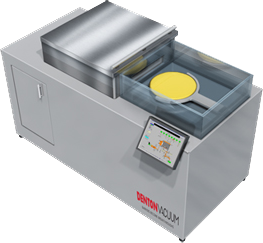Thermal evaporation has become one of the most commonly used ways to coat a substrate.
 One of the most common methods of thin film deposition is through the process of thermal evaporation, which incorporates the use of vacuum technology to apply coats of pure materials that stick to the surface of various objects. The benefits that a thermal evaporation system provides to the user range from efficient coatings to wide surface area reach. In most cases, the use of thermal evaporation is preferred due to its ease of use and efficiency.
One of the most common methods of thin film deposition is through the process of thermal evaporation, which incorporates the use of vacuum technology to apply coats of pure materials that stick to the surface of various objects. The benefits that a thermal evaporation system provides to the user range from efficient coatings to wide surface area reach. In most cases, the use of thermal evaporation is preferred due to its ease of use and efficiency.
The Process of Coating
The coatings that are created through the vacuum are called films. These films range in thickness and can be a single material or multiple materials in a layered type of structure.
The materials that are used can be pure atomic elements that include both nonmetals and metals like oxides and nitrides. The object that is coated is known as the substrate and can be anything from a semiconductor wafer to medical device coatings. The possibilities are endless as technological advancement has led to a wide array of uses.
Thermal evaporation begins by heating a solid material inside a vacuum chamber, which forces it to reach a temperature that releases vapor pressure. This evaporated material will then traverse the chamber and hit the substrate at a designated speed, which forms the coating, or film.
The material is often heated to its melting point and turns into liquid, which is located at the bottom of the chamber in a crucible setup. The vapor will then rise from the bottom of the chamber and inverted in appropriated fixtures – which will then proceed to coat the substrate.
Denton Vacuum, LLC is a reputable supplier of thin film coating systems. For processes, such as UHV sputter deposition, contact Denton Vacuum, LLC for their expertise advice. For more information visit them online today.
